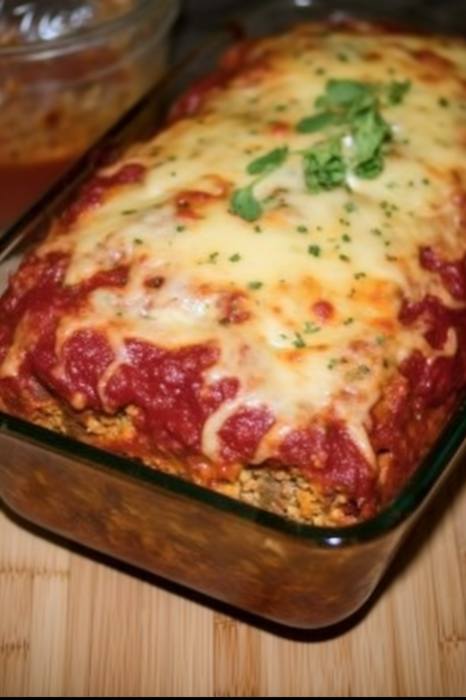As the colder months approach, many homeowners begin to notice the unwelcome chill of drafts seeping through their windows. These drafts not only make your home uncomfortable but can also lead to higher heating bills. Fortunately, there are simple and effective ways to combat this issue. My mom, a seasoned expert in home maintenance, has a tried-and-true method that she swears by to prevent drafts with almost zero effort. In this article, we’ll explore her ingenious trick and how it can help you keep your home cozy and warm, even when the temperatures drop outside.
The Simple Trick My Mom Swears By
The trick my mom uses involves a common household item: bubble wrap. Yes, you read that correctly—bubble wrap, the same material used for packaging, can actually be an excellent insulator for windows. By applying bubble wrap to the inside of your windows, you can create an additional layer of insulation that significantly reduces drafts. This method is not only effective but also incredibly easy to implement, making it a favorite among those who want a quick fix without the hassle.
Bubble wrap is an incredibly versatile material, often overlooked when it comes to home insulation. While most people associate it with shipping or protecting fragile items, it can also serve as an affordable and temporary solution for homeowners looking to retain heat and prevent drafts. Best of all, this method does not require any permanent alterations to your home, so it’s perfect for renters and homeowners alike.
Understanding How Drafts Affect Your Home
Drafts occur when cold air enters your home through gaps, cracks, and openings, most commonly around windows and doors. These gaps often develop over time as the weather changes, the materials in your windows or doors expand and contract, or the seals around them weaken. Once these gaps appear, cold air begins to seep inside while warm air escapes, leading to uneven heating throughout your home.
This imbalance not only makes your home less comfortable, but it can also cause your heating system to work harder to maintain a consistent temperature. As a result, you might notice your energy bills creeping up over the winter months. By addressing these drafts, you can improve the overall comfort of your home and reduce energy costs. In fact, sealing drafts around windows is one of the most effective and affordable ways to make your home more energy-efficient during the colder months.
Materials Needed for the Trick
To implement this trick, you will need the following simple materials:
- Bubble wrap – A commonly available item that’s inexpensive and easy to use. Ensure the bubble wrap you choose has medium to large bubbles, as these tend to provide better insulation.
- Scissors – To cut the bubble wrap to the correct size for your windows.
- A spray bottle filled with water – This will help the bubble wrap stick to the window surface and create a better seal.
- A towel or soft cloth – This will be used to smooth out the bubbles and ensure the wrap adheres firmly to the window.
The great thing about these materials is that they are all easily accessible, inexpensive, and non-permanent. The bubble wrap method is ideal for anyone on a budget or looking for a simple way to improve home insulation without breaking the bank.
Step-by-Step Guide to Implementing the Trick
Let’s break down the process so you can get started:
Step 1: Measure the Window
Start by measuring the window or windows you want to insulate. You’ll need to know the exact dimensions so you can cut the bubble wrap to fit. It’s important to ensure the bubble wrap covers the entire window to maximize insulation. A simple tape measure will do the trick here.
Step 2: Cut the Bubble Wrap
Once you have your measurements, use a pair of scissors to cut the bubble wrap to the appropriate size. Make sure the piece is slightly larger than the window dimensions to ensure complete coverage. It’s okay if the edges are a little bit bigger because you can trim them later, but having a piece slightly bigger than the window ensures that there will be no gaps in the coverage.
Step 3: Lightly Mist the Window with Water
Fill a spray bottle with water and lightly mist the surface of the window. Don’t soak the window, just a fine mist will suffice. The water acts as an adhesive, helping the bubble wrap stick to the glass without leaving any residue when removed. You can also use a towel to wipe down the window to remove any dust or dirt before applying the bubble wrap.
Step 4: Apply the Bubble Wrap
Take your cut piece of bubble wrap and place it bubble-side down onto the misted window. The bubbles should be facing the window pane, while the smooth side will face you. Press the bubble wrap gently into the glass, ensuring there are no air pockets or wrinkles.
Step 5: Smooth Out the Bubbles
Use a towel or soft cloth to press and smooth out any remaining air bubbles in the wrap. This will ensure that the wrap adheres firmly to the window and that there are no gaps between the glass and the bubble wrap. A smooth, snug fit is crucial for the best insulation performance.
Step 6: Repeat the Process for Other Windows
Once you’ve successfully insulated one window, repeat the process for any additional windows you want to insulate. For best results, focus on windows that are most prone to drafts, such as older or single-pane windows.
Why This Trick Requires Almost No Effort
This trick is incredibly easy because it requires minimal materials and no specialized skills. The process of applying bubble wrap to windows is straightforward and can be completed in a matter of minutes. Additionally, the materials are inexpensive and readily available, making this method accessible to anyone. Unlike other home improvement projects that require significant time and effort, this solution is quick and provides instant benefits.
Since bubble wrap is light and easy to handle, there is no need for professional installation, tools, or complex measurements. Simply cut, spray, and stick—it’s that easy! Plus, bubble wrap is removable, so if you decide you no longer want it on your windows, it can be taken down without leaving any damage or sticky residue.
Benefits of Using This Trick
There are several benefits to using bubble wrap as an insulation solution for your windows:
- Improved Energy Efficiency – By reducing drafts, bubble wrap helps maintain a stable temperature in your home. This means your heating system will work less to keep your space warm, leading to lower energy consumption.
- Reduced Heating Costs – Less reliance on your heating system to maintain a comfortable temperature results in savings on your monthly energy bills. Many homeowners report a noticeable decrease in their heating costs after applying this simple solution.
- Increased Comfort – The reduction of drafts means fewer cold spots in your home. Your space will feel warmer and more comfortable, and you won’t have to constantly bundle up when sitting near windows or doors.
- Temporary Solution – Unlike some insulation methods that require long-term commitment or expensive renovations, bubble wrap is a temporary solution. It can easily be removed when the weather warms up or when you no longer need it.
- Affordable and Readily Available – Bubble wrap is inexpensive and can be found at most stores, especially those that sell packing materials or home goods. You don’t have to worry about spending a lot of money to stay warm during the winter months.
Comparing Other Methods to Prevent Drafts
While the bubble wrap trick is quick, easy, and affordable, there are other methods to prevent drafts, such as weatherstripping, caulking, and using thermal curtains. Let’s compare these methods to the bubble wrap solution:
- Weatherstripping – This is a popular method that involves sealing gaps around doors and windows with adhesive strips. While it is effective, it can be more time-consuming and requires precise measurements and application. Weatherstripping is also a more permanent solution, which means it might not be suitable for renters.
- Caulking – This method involves sealing cracks and gaps around windows and doors with a silicone-based sealant. It’s a more permanent solution, but it can be messy and requires some skill to apply evenly. It also can be difficult to remove once applied.
- Thermal Curtains – These curtains are designed to block drafts and provide an extra layer of insulation. While effective, they can be expensive and may not be as aesthetically pleasing as regular curtains. They also require installation and may block natural light.
Common Mistakes to Avoid
- Not Cleaning the Window – One common mistake is not cleaning the window before applying the bubble wrap. Dirt and dust can interfere with the adhesive quality of the water and prevent the bubble wrap from sticking properly.
- Cutting the Bubble Wrap Too Small – If the bubble wrap is cut too small, you might leave gaps around the edges, allowing cold air to seep in. Always cut the bubble wrap slightly larger than the window for the best fit.
- Applying Too Much Water – While the water is necessary to help the bubble wrap stick, too much water can cause it to slide off the window or leave streaks on the glass. Use a fine mist to ensure the right amount of moisture.
Frequently Asked Questions
Q: Will bubble wrap damage my windows?
A: No, bubble wrap is safe for windows and can be easily removed without causing any damage.
Q: How long will the bubble wrap last?
A: Bubble wrap can last throughout the winter season and can be reused if stored properly. Just ensure you remove it carefully to avoid tearing.
Q: Does this method work for all types of windows?
A: Yes, bubble wrap can be applied to most window types, including single-pane and double-pane windows.
**Conclusion: Keeping Your Home Warm with Minimal Eff
ort**
Preventing drafts around windows doesn’t have to be a daunting task. With my mom’s simple bubble wrap trick, you can easily and effectively insulate your windows, keeping your home warm and your energy bills low. This method requires minimal effort and materials, making it an ideal solution for anyone looking to improve their home’s comfort during the colder months. Give it a try and experience the difference it can make in keeping your home cozy and energy-efficient this winter.





